Heat stress is a significant concern for dairy farmers during hot summer months. It can cause decreased milk production and reproductive performance, as well as health issues such as reduced feed intake, dehydration, and even death in severe cases. This page provides an overview of the topic, covering the effects of heat stress for dairy cows, the methods of prevention and ventilation solutions.
Topics we cover:
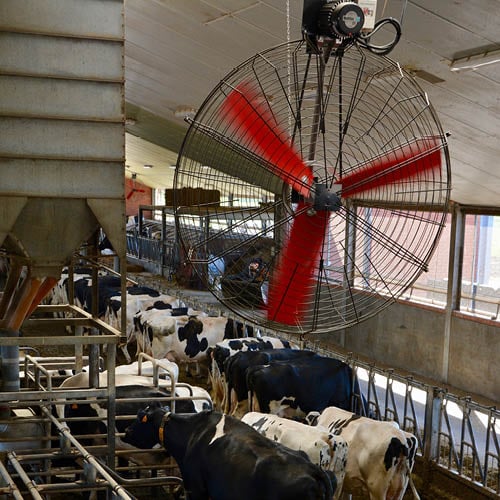
Cows generate a lot of heat, rising even more during milk production. It is also more difficult for cows to get rid of body heat. When the external environment warms up and the cow cannot release its heat, it will start suffering various negative health and productivity effects. Cows in this state are experiencing heat stress. For dairy cows, the optimum ambient temperature is between -5 and 18 °C. At a THI of 68 (or a temperature of around 22 °C in combination with a high humidity), a cow can already visibly suffer from the heat.
Heat stress in dairy cows can have a detrimental effect on their health and productivity. There are a number of ways in which heat stress negatively affects dairy cows. Below we have included the most common effects.
Cows experience the following negative effects as a result of heat stress:
Additionally, the THI index in the article linked below can help link different stages of heat stress based on temperature and humidity.
Preventing heat stress is crucial in maintaining cow health and milk production. The following actions can contribute to preventing heat stress:
Ventilation can be a crucial aspect when it comes to avoiding heat stress in cows. Therefore, it is important to carefully consider the ventilation system when designing and managing a dairy barn.
Read more about preventing heat stress in dairy cows
To determine the best place for your fans in a dairy barn you have to consider several aspects. As every barn is built differently, customization is the key to reach an optimal result. We have included a few guidelines for you below:
• Provide a refreshing airflow over the cubicles. This is where the cows spent the largest amount of time. Save at least 1.5 meters of free space on the suction side of the fan for optimal efficiency.
• Make use of existing trusses to mount 130-centimeter basket fans with a chain or to install smaller basket fans directly.
• Mount a 130 cm basket fan between double cubicles. The reach of the fan is wide enough to provide both cubicles with a cooling effect.
• Mount the fans by extension of each other
• Use spaces that do not need to be ventilated (Such as the area for calves) for the suction side of the fan.
Read more about where to install fans in a dairy barn
Are you looking for more information on this topic? You can find more information in our white paper covering topics such as how many fans you need in your dairy barn, what the ideal tilt angle is and which size will work best for your building.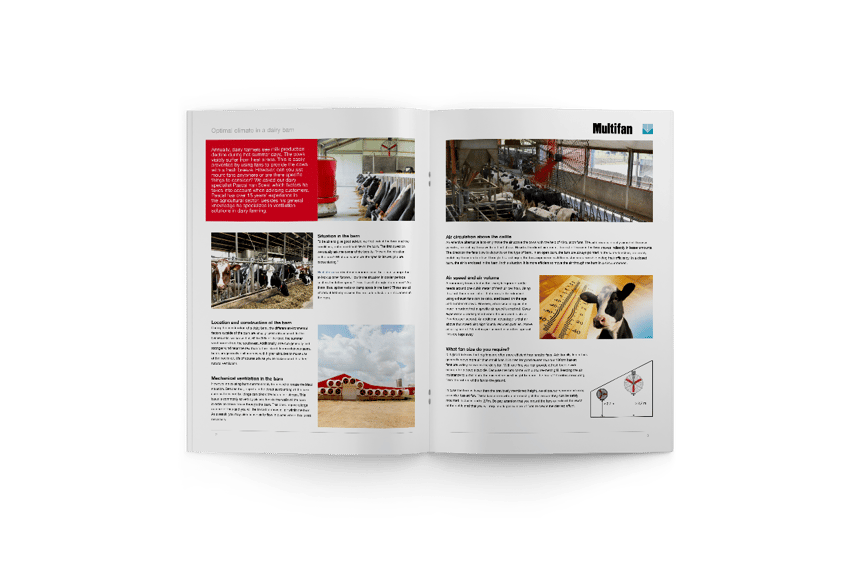
The number of fans you need in a dairy barn depends on several factors. One of the main factors is the size of the barn and how much air needs to be moved. Our 130 cm basket fan can typically produce an air speed of 2 meters per second and cover an area of 15 meters. If you want to increase the coverage and efficiency of the fan, you can add another fan after 15 meters. This will create a cycle where the moving air from one fan is sucked in by the next fan and blown through to the next one. This not only improves the area of effect but also increases efficiency. In the article below we explain this matter with a calculation you can use to determine how many fans you will need to achieve the desired air movement.
Read more about the amount of fans you will need in your dairy barn
Ventilation and circulation fans for healthy and productive dairy cattle
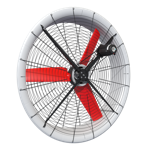
Most powerful way to prevent heat stress.
High throw and air output
Low-noise for a peaceful environment
Robust design for harsh environments
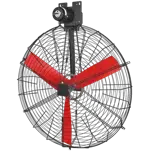
Our Basket fans is the most popular choice for dairy barns. These fans are ideal for creating a cool airflow and preventing heat stress.
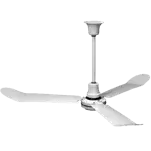
The ceiling fan is extremely suitable for mixing warm upper air in a building with cold lower air.
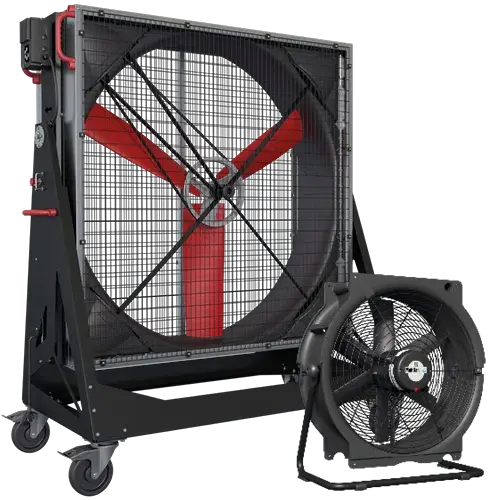
Fresh air wherever and whenever you want. Our mobile fans are easy to move around the dairy barn.
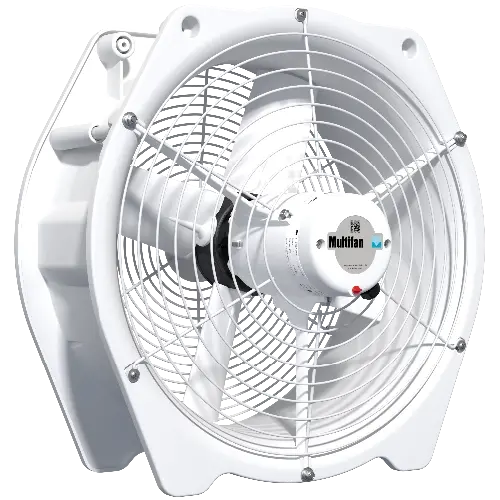
This fan recirculates air over a long distance, quickly creating a uniform indoor climate. Can also be used to create air movement in your dairy barn.
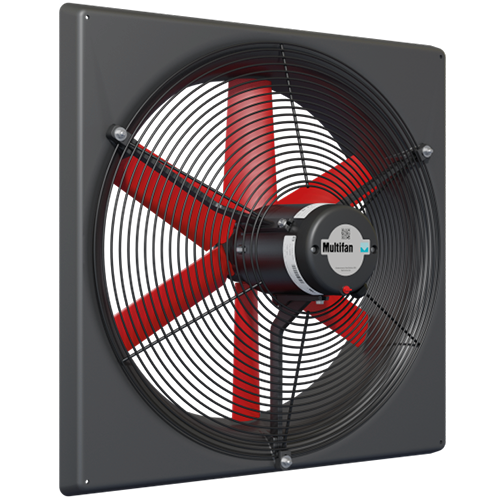
The all-round fan that, in most cases, is positioned within the wall to ventilate dairy barns.
Receive insights in your mailbox